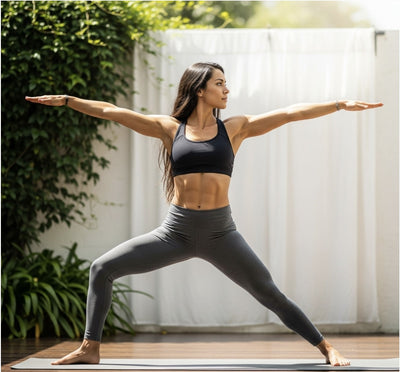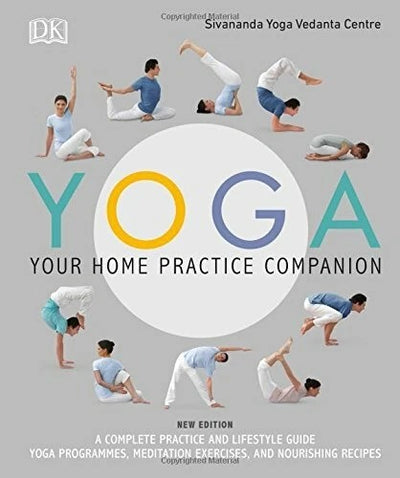
Pranayama (Breath Control) in Hatha Yoga: Techniques and Effects - 5To9Styke
Share
Pranayama (Breath Control) in Hatha Yoga: Techniques and Effects
Introduction
While asanas (physical postures) often take center stage in Western yoga, pranayama, or breath control, is an equally vital pillar of Hatha Yoga. The word "pranayama" is derived from two Sanskrit words: "prana" meaning life force or energy, and "ayama" meaning to extend, expand, or control. Therefore, pranayama refers to techniques designed to regulate and expand the vital life force within us. This article will delve into the fundamental pranayama techniques in Hatha Yoga and explore their remarkable effects on our physical, mental, and emotional well-being.
The Importance of Breath in Yoga
In Hatha Yoga, the breath is considered the bridge between the body and the mind. By consciously regulating our breath, we can directly influence our mental state, energy levels, and overall health. Unlike the autonomic nature of everyday breathing, pranayama involves specific patterns and techniques that can be learned and practiced to cultivate profound internal shifts. Wearing comfortable and non-restrictive yoga wear from 5to9 Style allows for unrestricted breathing and movement during these practices.
Fundamental Pranayama Techniques
Here are some essential pranayama techniques commonly practiced in Hatha Yoga:

Ujjayi Pranayama (Victorious Breath or Ocean Breath):
Technique: Inhale and exhale through the nose with a slight constriction at the back of the throat, creating a soft, ocean-like sound. The breath should be smooth, even, and controlled.
Effects: Calms the nervous system, builds internal heat, improves focus and concentration, and helps to synchronize breath with movement in vinyasa styles.
Nadi Shodhana Pranayama (Alternate Nostril Breathing):
Technique: Use your right thumb to close your right nostril and inhale deeply through your left. Then, close your left nostril with your right ring finger and exhale through your right. Inhale through your right nostril, close it, and exhale through your left. Continue alternating nostrils, maintaining a smooth and even breath.
Effects: Balances the right and left hemispheres of the brain, calms the mind, reduces stress and anxiety, and purifies the energy channels (nadis).

Bhastrika Pranayama (Bellows Breath):
Technique: Sit comfortably with your spine erect. Forcefully exhale and inhale rapidly and rhythmically, using your diaphragm. The breath should be powerful and come from the belly. Beginners should start with a few rounds of short duration.
Effects: Generates heat in the body, increases energy levels, detoxifies the system, and can help to clear congestion in the lungs. This is an energizing breath and should be practiced with awareness.
Kapalabhati Pranayama (Skull Shining Breath):
Technique: Sit comfortably with your spine erect. Begin with a normal inhalation. Then, forcefully exhale by contracting your lower belly, followed by a passive, natural inhalation. The focus is on the sharp, forceful exhalation. Practice in rounds with rest in between.
Effects: Cleanses the frontal lobes, invigorates the mind, improves digestion, and helps to release toxins. This is an energizing and purifying breath.
Sitali Pranayama (Cooling Breath):
Technique: Sit comfortably. Extend your tongue and curl the sides inward to create a straw-like shape. Inhale deeply through the curled tongue and exhale slowly through the nose. If you cannot curl your tongue, inhale through slightly pursed lips.
Effects: Cools the body and mind, reduces heat and inflammation, calms the nervous system, and can help to relieve thirst.

Brahmari Pranayama (Bee Breath):
Technique: Sit comfortably. Close your eyes gently. Bring your thumbs to your earlobes, gently closing the ear canals. Inhale deeply through the nose and exhale slowly, making a soft, humming sound like a bee.
Effects: Calms the mind, reduces anxiety and frustration, soothes the nervous system, and can improve concentration.
Effects and Benefits of Regular Pranayama Practice
Consistent practice of pranayama offers a multitude of profound effects:
Increased Prana (Life Force): By regulating the breath, we enhance the flow and availability of vital energy in the body.
Calming of the Nervous System: Many pranayama techniques help to activate the parasympathetic nervous system, promoting relaxation and reducing stress and anxiety.
Improved Mental Clarity and Focus: By quieting the fluctuations of the mind, breath control enhances concentration and mental acuity.
Emotional Balance: Pranayama can help to release stored emotions and cultivate a greater sense of emotional stability.
Detoxification of the Body: Certain techniques like Bhastrika and Kapalabhati aid in cleansing the respiratory system and eliminating toxins.
Improved Sleep Quality: Regular practice can help to regulate sleep patterns and promote restful sleep.
To fully experience these benefits, it's important to practice consistently and with awareness. Having comfortable yoga wear from 5to9 Style ensures that your clothing doesn't restrict your breath or movement, allowing you to focus fully on the techniques.
Integrating Pranayama into Your Yoga Routine
Pranayama can be practiced as a standalone session or integrated into your asana practice. Beginners can start with a few minutes of simple techniques and gradually increase the duration and complexity as they become more comfortable. It's often beneficial to practice pranayama after warming up the body with gentle asanas. Remember to listen to your body and avoid pushing yourself beyond your capacity, especially when learning new techniques.
Choosing the Right Yoga Wear for Unrestricted Breathing
When practicing pranayama, it's crucial to wear clothing that allows for full expansion of your lungs and diaphragm. Tight or restrictive garments can hinder your breath and diminish the benefits of the practice. 5to9 Style offers a range of comfortable and breathable yoga wear, including loose-fitting tops and flexible yoga pants, perfect for supporting your pranayama practice. Explore our collection at https://5to9style.com/collections/all and find activewear that moves with your breath.
Conclusion
Pranayama is an indispensable aspect of Hatha Yoga, offering profound tools for harnessing the power of our breath to cultivate physical health, mental clarity, and emotional well-being. By learning and consistently practicing these breath control techniques, you can tap into a wellspring of energy, reduce stress, and deepen your connection to your inner self. Embrace the transformative potential of pranayama and elevate your yoga journey.
Ready to deepen your yoga practice with the power of breath? Explore our comfortable and breathable yoga wear collection at https://5to9style.com/collections/all. Visit our homepage at https://5to9style.com to learn more about 5to9 Style and find the perfect attire to support your mindful breathing journey.








